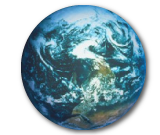The future of innovation in renewable energy technology has us excited at Environmental Research Advocates!
Here we share a few important developments in solar technology research and design to keep an eye on in 2014 and beyond. These technologies can help make solar one of the most viable energy options of the future.
Reference our “Solar Panel Cheat Sheet” to brush up on how solar panels work, and better understand the goals of innovation in the solar sector.
Graphene:
· Application: Electricity conductor in solar cells
· What’s the big deal: Can conduct electricity efficiently while allowing more photon absorption.
· Details:
o Graphene, a multi-purpose carbon-based material, has received a lot of hype from the science world. It turns out it could serve as an excellent material in solar cells to conduct electricity efficiently.
o “Graphene has extreme conductivity and is completely transparent while being inexpensive and nontoxic. Therefore it is a perfect candidate material for transparent contact layers for use in solar cells to conduct electricity without reducing the amount of incoming light.”
· READ MORE: http://phys.org/news/2013-10-major-graphene-solar-cells-retains.html#jCp
Solar Walk Way:
· Application: Durable solar panels used as material to build sidewalks.
· What’s the big deal: Solar panels must be placed in an open space with exposure to sunlight, which often relegates them strictly to rooftops. Solar walkways would open up an entirely novel space to generate electricity. Further research could even create solar roads!
· Details:
o The project was installed at George Washington University, and the solar walkway technology was designed by Onyx Solar, a company based in Spain.
o “The landscaped pedestrian sidewalk boasts a solar-powered trellis and 27 slip-resistant semi-transparent walkable panels with photovoltaic technology that converts sunlight into electricity.”
· READ MORE: http://gwtoday.gwu.edu/gw-debuts-solar-walk-virginia-science-and-technology-campus
Quantum Dot Solar Cells:
· Application: Nanotechnology replacements for semiconductors in solar cells
· What’s the big deal: Quantum solar dots can be more cheaply engineered in a lab, and can absorb a greater spectrum of photons than standard silicon semiconductors (including infrared light).
· Details:
o The broader spectrum of photons absorbed gives Quantum Dot Solar Cells more potential to reach high levels of efficiency, wasting less potential energy in the process.
o Dr. Ted Sargent of the University of Toronto has achieved 7% conversion efficiency in lab testing of Quantum Dot Solar Cells, which is significantly lower than silicon cells, but a very promising number for future research and design.
· READ MORE: https://erascience.org/news/blog/2013/05/paul_weiss_friend_era_and_director_california_nanosystems_institute_hosts_guest
Perovskites
· Application: Alternative material for semiconductors in solar cells
· What’s the big deal: Perovskites don’t require an electrical field to produce a current, saving room on the panel for more solar cells. Perovskite solar cells have the potential to convert light into electricity at over 50% efficiency.
· Details:
o Perovskites are modified compounds that have crystalline structures.
o “The researchers also showed that it is relatively easy to modify the material so that it efficiently converts different wavelengths of light into electricity. It could be possible to form a solar cell with different layers, each designed for a specific part of the solar spectrum, something that could greatly improve efficiency compared to conventional solar cells”
· READ MORE: http://www.technologyreview.com/news/521491/a-new-solar-material-shows-its-potential/
Robots for Solar Panel Installation and Maintenance:
· Application: Robots are programmed to efficiently install and maintain solar panels.
· What’s the big deal: Keep solar panels functioning efficiently, saving money on installation maintenance costs.
· Details:
o Solar panel modules dropped to 35 percent of system costs in 2013, down from 53 percent in 2010, while labor, engineering and permitting rose to 15 percent from 9 percent in the same time period. Robots could significantly lower these costs.
· READ MORE: http://mobile.nytimes.com/2013/10/15/business/energy-environment/putting-robots-to-work-in-solar-energy.html
Direct Semiconductor Bonding
· Application: Enables semiconductor “stacking” within the solar cell, which allows a broader spectrum of photons to be absorbed.
· What’s the big deal: Set world record solar conversion efficiency at 44.7% (in-lab testing) in September 2013
· Details:
o Direct Semiconductor bonding connects “two semiconductor crystals, which otherwise cannot be grown on top of each otherwith igh crystal quality… [producing] the optimal semiconductor combination to create the highest efficiency solar cells.

